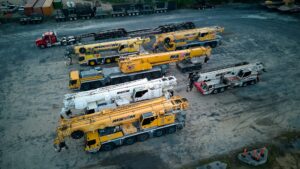
As the world is moving toward sustainable options, so is the construction industry. The sustainability is making the industrialists keep their focus on reusing materials that would otherwise end up in landfills. It has made all the impossible possible. One such innovation that is making the construction more sustainable is the use of recycled aggregates, which are produced from construction debris like concrete, asphalt, and other waste materials. The construction debris is converted to granular materials again to use in the construction. These aggregates are really transforming modern construction. Below are some ways in which they are impacting the industry.
1. Recycled Aggregates: A Second Life to Construction Waste
The main advantage of using recycled aggregates is that they reduce construction waste. Construction and demolition projects generate tons of waste, which often end up in landfills. Because of that, construction waste is getting hard to manage, with the increase in pollution all over the world. However, instead of discarding these materials, builders can now repurpose them into recycled aggregates and use them again. This not only reduces the burden on landfills but is also beneficial for the growing problem of construction waste. When construction companies opt to recycle old concrete and other debris, they take a big step toward minimizing environmental pollution.
2. Recycled Aggregates: Reducing Project Costs
When the builders use recycled aggregates, it helps cut down project expenses in several ways. When they use new concrete, it costs a lot, which can increase the project budget. On the other hand, recycled aggregates are often cheaper than freshly quarried aggregates, primarily because they involve fewer production and transportation costs. It is sometimes available locally, which can significantly help reduce logistics expenses. It makes these materials an economical choice for builders. As a result, construction companies can stay within budget without sacrificing the quality of the materials used in their projects.
3. Recycled Aggregates: Lowering Environmental Impact
Natural aggregates like concrete granules or sand are mostly produced by mining. Mining consumes a significant amount of energy, which contributes to environmental degradation. However, when these mined resources are replaced with recycled aggregates, it can greatly help reduce the environmental footprint of construction projects. This transfer of material use reduces the need for quarrying, conserving natural resources, and preventing habitat destruction. Additionally, when builders use recycled materials, the carbon emissions associated with transporting new resources over long distances decrease. It makes construction projects more environmentally friendly.
4. Recycled Aggregates: Supporting Sustainable Construction Practices
The world is growing fast, and the need for sustainability is also increasing. The use of eco-friendly materials like recycled aggregates also contributes to sustainable construction methods. Governments and regulatory bodies are also incentivizing the use of recycled materials through green building certifications and tax benefits. When the builders choose to work with these recycled materials, it means they align themselves with sustainable construction trends while contributing to a greener future. This widespread adoption of recycled aggregates is expected to become a standard practice in the construction industry, which can change the whole world to meet environmental targets without compromising on project goals.



